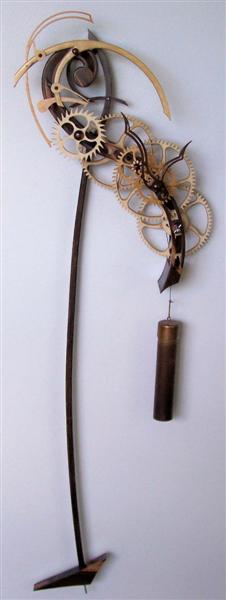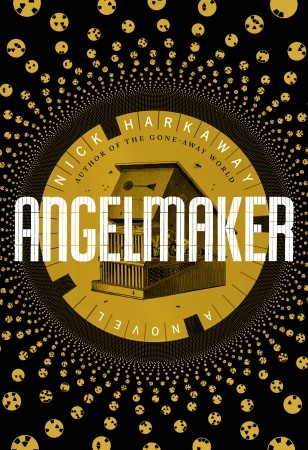 |
| http://www.lisaboyer.com/Claytonsite/swoopypage1.htm |
Very generally, you want to have a firm grasp of gear ratios when:
- you have one thing spinning very quickly and you want to slow it down
- you have something spinning very slowly and you want to speed it up
- you own a bike and live in a very hilly area
- you own a manual-transmission car and live in a very hilly area
- you want to transmit rotational motion from point A to point B, which are fixed
Picture two gears, of equal size. the first one is connected to a motor (the driver gear) and the second one (the driven gear) meshes with the first. When the first one rotates - let's say at 1 revolution per second - the second one follows suit exactly. That's the trivial case - the ratio is 1:1, because both gears are rotating at the same speed. Here's a non-trivial case:
![[fedora gears]](http://howto.nicubunu.ro/gears/gears_16.png) |
| Licensed under a Creative Commons license from here: http://howto.nicubunu.ro/gears |
Ndriven:Ndriver = 25/12 = 2.08
The small gear spins 2.08 times faster than the big one. Put another way, the small gear has to make 2.08 revolutions to get the big gear to turn once.
Let's isolate the second and third gears, now. We know that the second gear has 25 teeth. The third has 18. Now the equation gets us:
Ndriven:Ndriver = 18/25 = 0.72So the third gear spins one revolution for every 0.72 turns of the middle one. New question, then: how many turns of the driver gear does it take for the third gear to make one revolution? Wikipedia says that you can just multiply the individual gear ratios in the train to get the overall ratio for the entire train, provided all the gears contact each other. (I'm not sure I understand mathematically why that's so, but I'll run with it for now.) That leaves us with:
2.08*0.72 = 1.4976The driver gear makes 1.4976 revolutions for every one turn of the third gear. And now you should be getting suspicious, because the first gear has 12 teeth and the third gear has 18, and 18/12 is awfully close to 1.4978. It turns out that, provided the gears contact each other, you can simply take the ratio of the first and last gears to get the total gear ratio between them. (The discrepancy between the answer calculated above and the 1.5 you'd get from dividing 18/12 is because I rounded 2.083333333...into something easier to type.)
So...err....not that bad after all, at least not yet. Some questions I can think of (namely, "If my escapement gear has 12 teeth, how many leaves should my fourth wheel pinion have, and how many teeth should my fourth gear have, and how many leaves should my third wheel pinion have (etc., etc.), so that the center wheel makes one revolution every hour?") might be considerably more complicated. I'm sure you have exactly the same questions.
Are you done with gear ratios for now? I'm done.
 \
\


